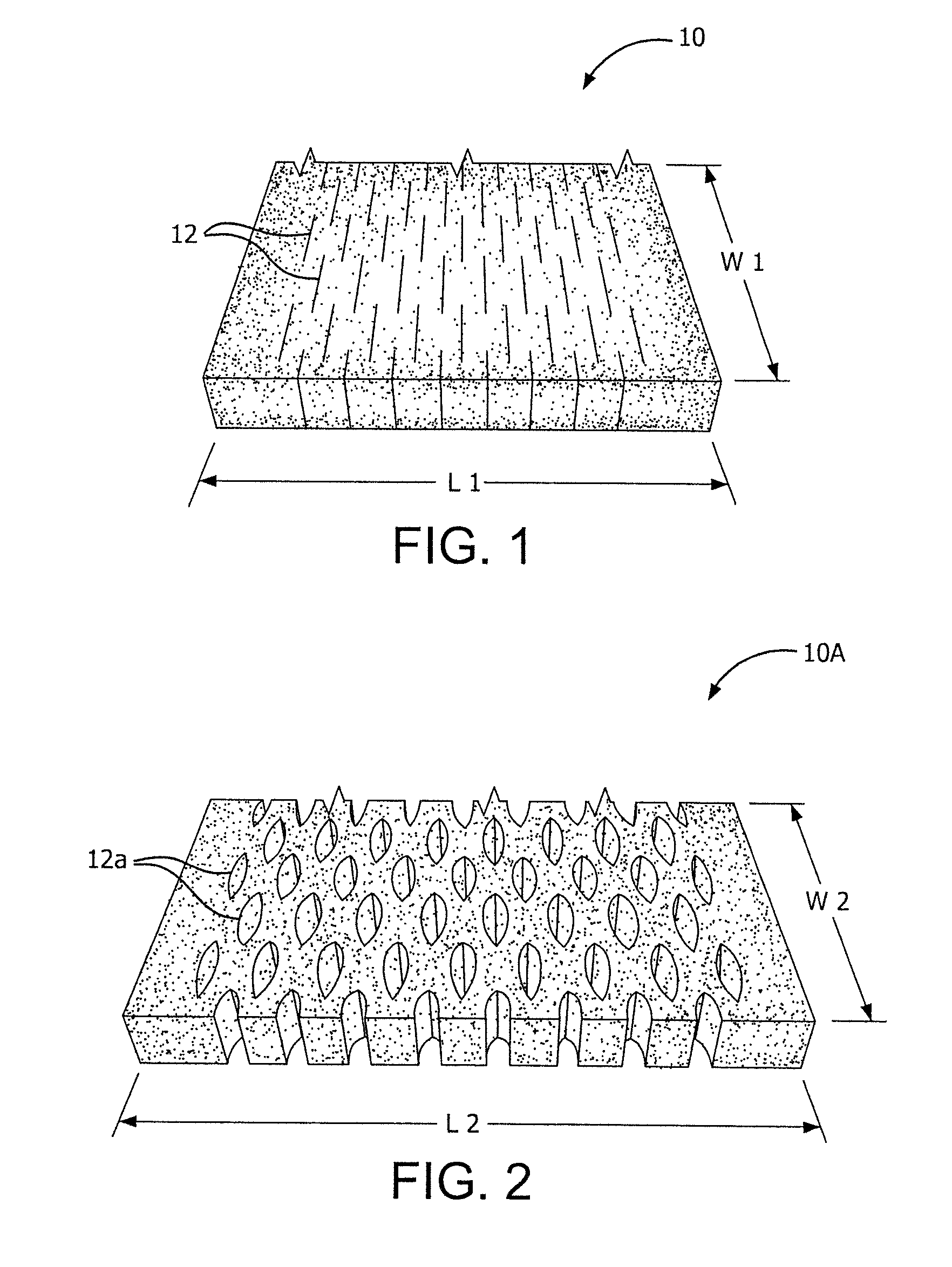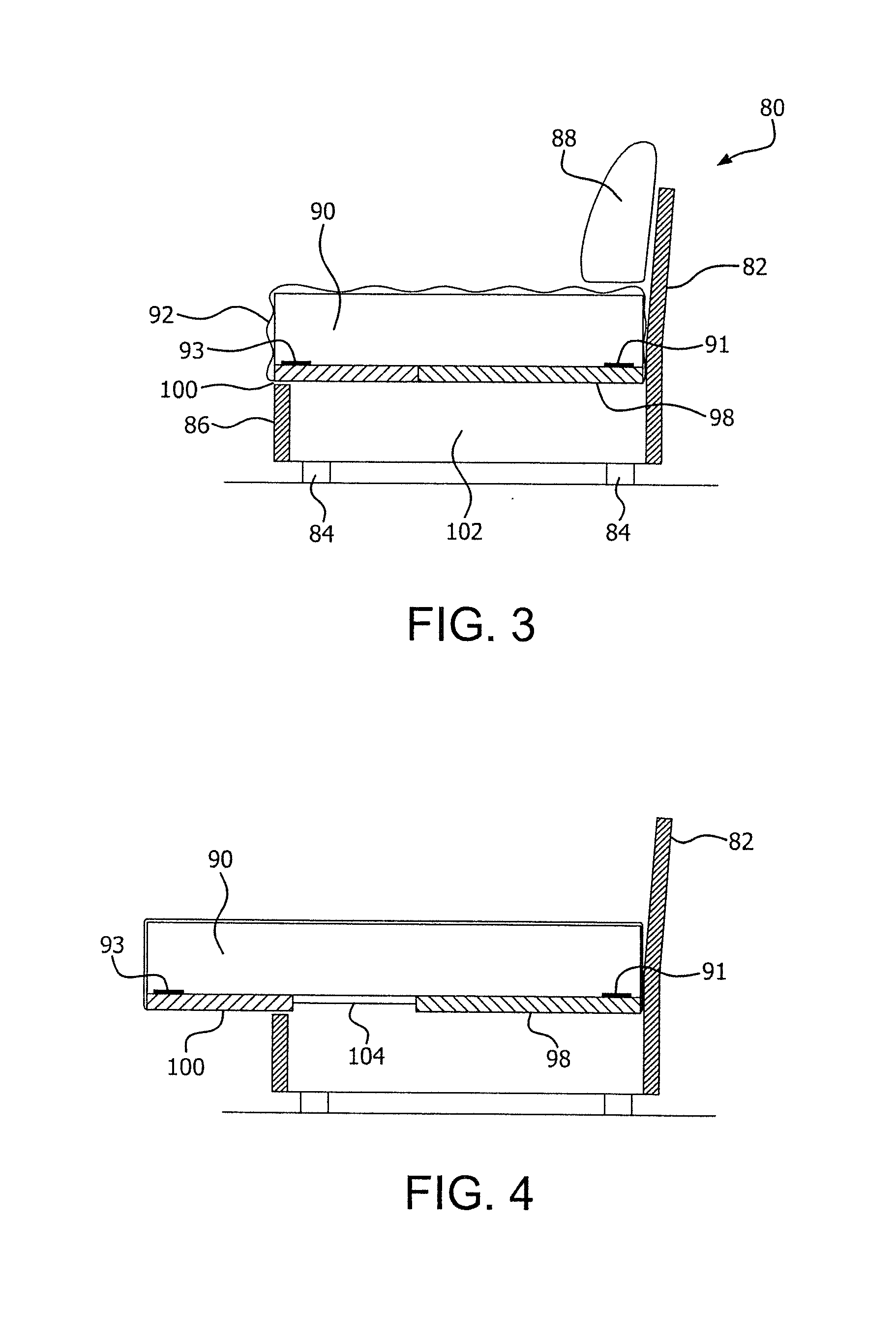Convertible furniture with selectively expandable mattress cushion section(s)
a technology of mattress cushion section and convertible furniture, which is applied in the direction of beds, couches, chairs, etc., can solve the problems of clumsy and relatively unpleasant appearance of furniture in seating mode, insufficient sleeping length mattress, and significant problems for designers, etc., to achieve the effect of reducing the amount of force or effort and the same width and depth
- Summary
- Abstract
- Description
- Claims
- Application Information
AI Technical Summary
Benefits of technology
Problems solved by technology
Method used
Image
Examples
Embodiment Construction
[0048]Referring first to FIGS. 1 and 2, a mattress section or cushion 10 has a first width W1 and first length L1 identified in FIG. 1. When the mattress section or cushion 10A is stretched or pulled in the direction of its length, slits 12 cut through the mattress section or cushion material expand open to form holes or opening 12a. The mattress section or cushion 10A has an elongated length L2 after it has been stretched (see FIG. 2). Notwithstanding the expansion or elongation of the foam, the mattress section or cushion retains its generally planar top surface. Moreover, depending upon the amount of stretch, the width W2 of the mattress section or cushion may be substantially the same or comparable to the width W1 of the mattress section or cushion pre-stretch or pre-expansion.
[0049]As illustrated in FIGS. 1 and 2, the mattress section or cushion 10, 10A is formed of a resilient, stretchable or flexible material with sufficient cushioning and body supporting properties. One suit...
PUM
 Login to View More
Login to View More Abstract
Description
Claims
Application Information
 Login to View More
Login to View More - R&D
- Intellectual Property
- Life Sciences
- Materials
- Tech Scout
- Unparalleled Data Quality
- Higher Quality Content
- 60% Fewer Hallucinations
Browse by: Latest US Patents, China's latest patents, Technical Efficacy Thesaurus, Application Domain, Technology Topic, Popular Technical Reports.
© 2025 PatSnap. All rights reserved.Legal|Privacy policy|Modern Slavery Act Transparency Statement|Sitemap|About US| Contact US: help@patsnap.com



